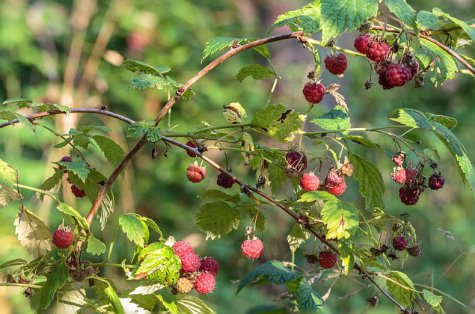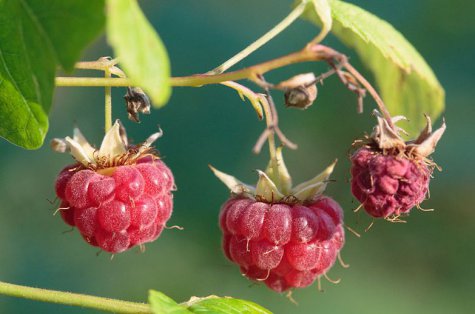Going raspberry picking?
Photos Arne Ader
Translation Liis
Raspberries
Raspberry Harilik vaarikas Rubus idaeus
Raspberry harvests vary over the years: frost or rain during flowering prevent insects from pollinating the plants, a summer drought leaves the berries small; in general, a good yield repeats at intervals of 3-4 years.
The raspberry fruit is an aggregate of drupes, thus every little red raspberry grain is a drupe, and in one fruit there can be several tens of them.
The ripe fruit is easily released from the flower receptacle.
Why are raspberries hairy? At every drupelet the dried style and stigma of the flower remain.
The tiny hard raspberry seeds will not disturb a berry lover much.
Who has not come across raspberries with maggots? But already in August the raspberry beetle larva vanish from the berries. They head for the ground, to pupate in the soil, appearing again as beetles in autumn already, then wintering in the soil. And in June next year they will lay their eggs on the young raspberry canes: this is the life cycle of these insects.
From raspberries we get a lot of vitamins, acids, sugars and what not more. Eating raspberries picked in nature is particularly beneficial. Freshly picked raspberries with sugar and milk – who could withstand such a delicacy?
We see raspberry canes nearly everywhere, good for putting one or two berries in one’s mouth. A really good raspberry plot for picking depends on a soil rich in humus, enough moisture, and preferably half-shade; also on the weather, very varying over the years – the task of finding one is not easy.
Raspberry










